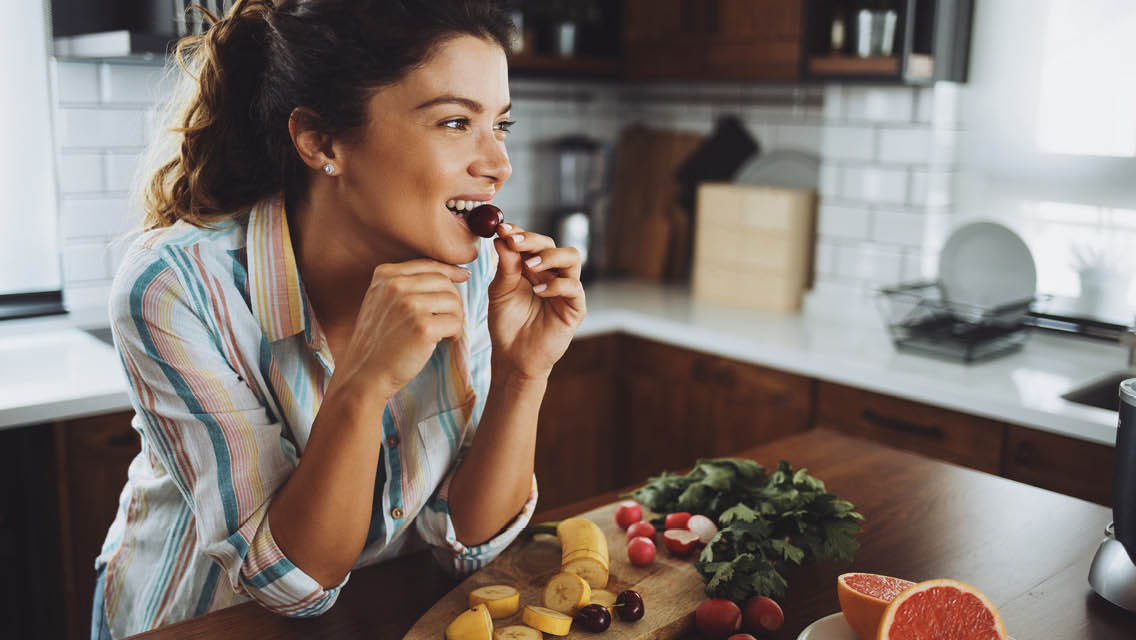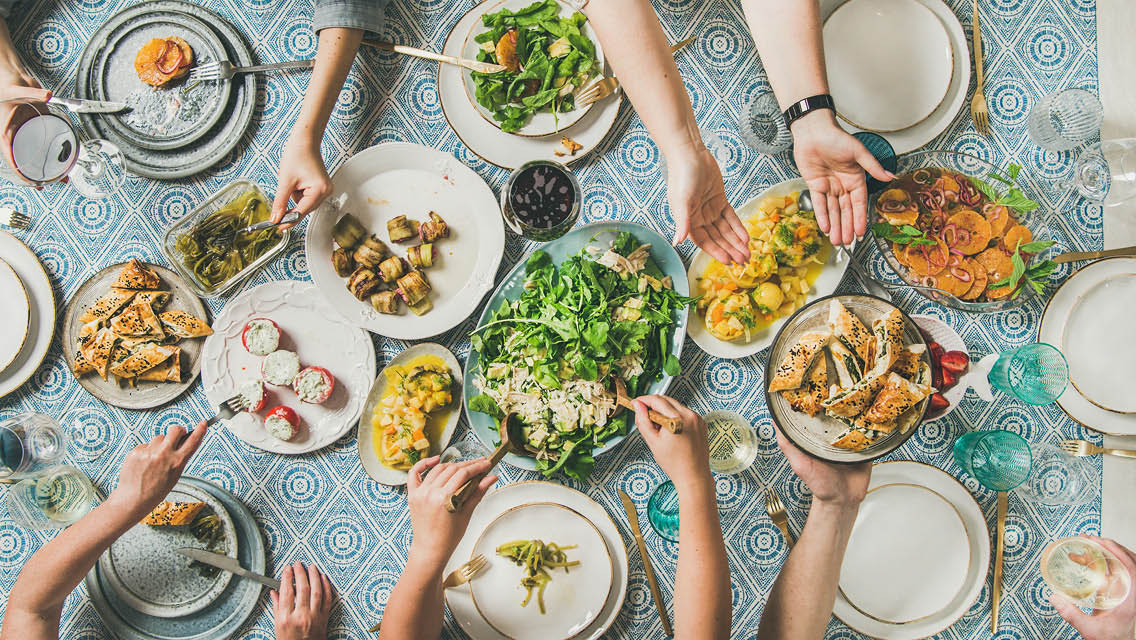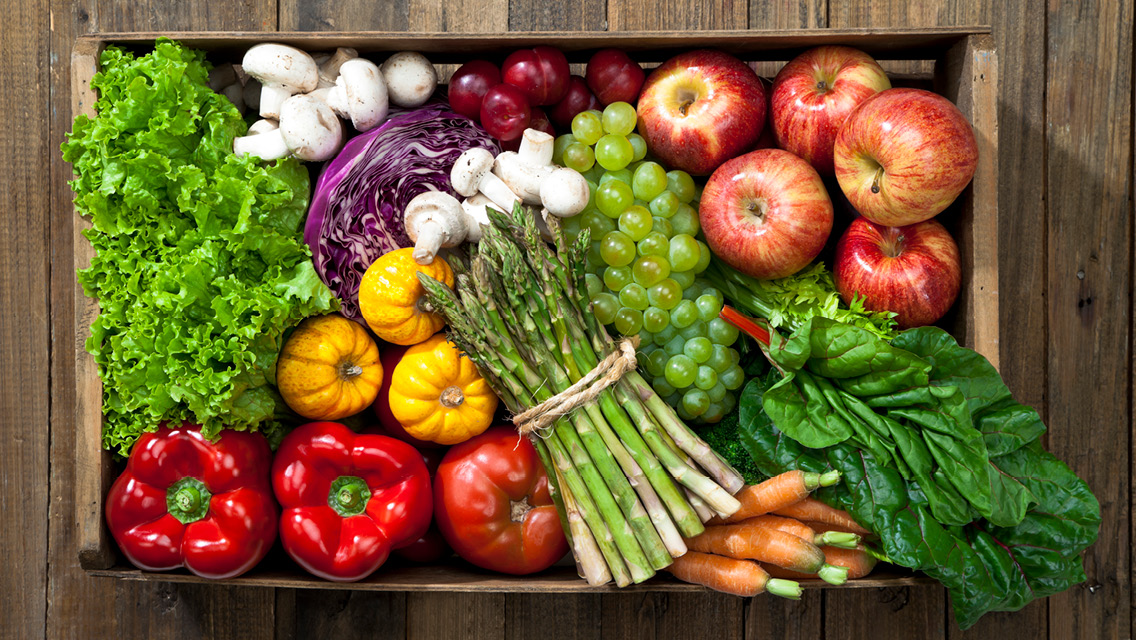The following excerpt was adapted from the introduction to Janine Whiteson’s book, Get a Real Food Life. In her book, Whiteson — a personal nutritionist and food coach with a thriving Manhattan-based practice — shares the strategies she’s found most successful in helping her clients develop optimal eating habits, improve their nutritional understanding and evolve their food attitudes.
The book, subtitled Janine Whiteson’s Revolutionary 8-Week Food Makeover, provides guidance and structure for readers to construct a complete, self-guided food overhaul, including a personalized nutritional blueprint, self-diagnostic quizzes, exercises, shopping lists and recipes, plus a wide variety of easy eating-habit makeovers and directions for keeping a food journal.
The following passage provides an overview of the broader tactics on which Whiteson bases her proven nutritional and food-counseling approach. Emphasizing that each person must ultimately develop and refine a customized strategy that works for them, Whiteson suggests that virtually everyone stands to gain from basic, commonsense guidelines that help them regain a newfound freedom to truly enjoy their food.
Getting a Real Food Life
1. Creating Food Sanity
If you want a Real Food Life, you’ll first have to rid yourself of your food obsessions. Constantly thinking about anything — including your food — will consume you and drag you down. Food is there to nourish your body and satisfy your soul. If you are obsessing about food, you aren’t enjoying a necessary and pleasurable aspect of your life.
What brings on food obsessions?
In my experience, they’re often a result of people depriving themselves by over-restricting their diets and trying to “control” their food. Other times people simply don’t eat enough; they try to be “good” with their food (they’re usually trying to lose weight), so they eat too little of it. But eating too little promotes obsessive food thoughts, interferes with your brain chemicals, and can lead to binges and eating disorders. When you eat too little, your levels of cholecystokinin (CCK) — a neurotransmitter whose function is to send signals to stop eating, switch off the appetite, and activate feelings of fullness — become unbalanced. Conversely, when you eat a healthy, balanced diet, your CCK levels are balanced and your body will naturally tell you when it has had enough food.
2. Food for Thought
- Listen to your body. When you start listening to your body and hearing what it really needs, food will become less of an issue for you. Begin by simply noticing how you feel after eating. Are you tired, or do you feel energized? Do you feel bloated and a bit queasy? Or ready to take on the world? Tune in to the connections between what you feed your body and how your body feels afterward.
- Keep busy. Do whatever it takes to have an active and full day, both physically and mentally. It may sound simplistic, but when you’re busy and involved with other activities, you’re not going to be thinking about food all the time.
- Shop and cook. Going grocery shopping and cooking for yourself — rather than simply picking up a meal at a local fast-food drive thru or heating up a frozen dinner — are proactive ways to stop food obsessions. Not only do they make you more conscious of your food choices, but they also give you a sense of accomplishment since they help you to connect with what you’re putting in your body. The simple act of preparing a meal also helps you to take time to nourish and provide for your soul.
- Create an action plan. An action plan is a food-life schedule where you write down what you will probably eat for the whole day. If you plan your “food intentions” you can move on with the rest of your daily life. Don’t worry if the plan doesn’t work out exactly; just the act of creating a plan will help you think less about food.
- Eat deliciously. All the food you eat, whether it’s a snack or a meal, should be very tasty and gratifying. If you choose delicious foods every time you eat, rather than trying to choke down foods you don’t like but you think are good for you, you’ll be much more satisfied. And if you’re always satisfied with your food choices, you are much less likely to obsess about food. Fortunately, there are literally hundreds of delicious and nutritious food choices out there, including many varieties of fruits and vegetables that you’ve probably never even tried.
- Undo damaging thoughts. You have to put an end to negative thoughts about yourself. If you keep telling yourself things like, “I’m always going to be large,” “I’ll always be a mess with food,” or “I have no self-control,” you’ll sabotage your own efforts to achieve a Real Food Life. It’s imperative to find a way to eliminate these types of phrases from your mind. The next time you catch yourself saying something negative, consciously replace the thought with a positive one. For example, visualize yourself eating in a more wholesome, healthy way, imagine yourself cooking a nutritious meal that makes you feel great, or picture yourself full of energy and able to conquer anything.
3. Ditch the “Good” Food/”Bad” Food Syndrome
In a Real Food Life, there is no such thing as “good” or “bad” foods. Instead, no foods are forbidden. I’ve found that labeling foods as “good” or “bad” leads to feelings of guilt. The interesting thing about guilt, though, is that it’s a self-imposed emotion; you are the only one who can make yourself “feel guilty.”
Did someone ever say to you that the chocolate you were eating “will make you break out” or “will go straight to your hips” or that those potato chips “will make you fat and crave more”? These types of comments make people afraid of their food. In fact, many of us take to heart the criticism inherent in comments like these. But, once again, realize that only you can make yourself feel guilty about the food you eat. It is no one else’s business what you choose to eat, and no one has the right to say anything about what you’re eating — unless, of course, they want a bite.
To start on the path to overcoming the “good” food/”bad” food syndrome, keep these general points in mind.
- Realize that no food is off-limits. When you set rigid limits, you’ll break them — it’s human nature. If you tell a child not to touch a certain lamp, he’ll make a beeline for that lamp. By the same token, if you tell yourself you can’t eat something, that something will be the only thing you want to eat. Permit yourself to eat any food — after all, savoring delicious, mouth-watering foods is one of the greatest joys in life.
- Erect food boundaries. Just because no food is forbidden doesn’t mean that there shouldn’t be boundaries. Obviously, you do your body no good when you feed it a steady diet of colas, chips, ice cream, and hamburgers. Know that you can have any food, but have a controlled, contained amount. For example, if you love chocolate, have a few Hershey’s Kisses rather than the whole bag. No doubt you’ll come to realize that a taste of the chocolate candies satisfies you and is really all you want. Boundaries don’t limit food; they put it into perspective.
- Fortify your food boundaries. To keep from overindulging, write down the food you most crave and the amount you will eat (a small portion should do it). Then buy the food and eat just that amount. It’s a good idea to buy a small, single-serving package of the food you crave. If you can get it only in large sizes, though, throw the rest away after you’ve eaten the amount you specified; don’t bring it home or keep it around you. After a few attempts, you may be able to keep the remainder of that food around, but if not, that’s okay.
(See “How to Stop Self-Sabotaging Your Diet” to learn how your thoughts affect your food habits and strategies to overcome common pitfalls.)
4. Accept Your Body
There’s a lot of self-hate out there, and it’s usually about body size. While many men have low self-image issues, this seems to be a problem that most affects women. Remember this: There is no such thing as a perfect body. The perfect body is something created and perpetuated by the media. The average American woman is 5-feet-4-inches tall, wears a size 14, and weighs in the 150-pound range. One third of all American women wear a size 16 or larger. The average model, on the other hand, is 5-feet-9-inches tall and weighs 110 pounds (and usually wears a size 4).
To be female means to have curves, a rounded butt, and larger hips and thighs. Women have more body fat than men do, and there’s nothing you can do to change that biological fact. More curves — and fat — are how women were created and have evolved; they need their curvy bodies for their hormones to work properly, to be able to get pregnant, to hold on to a pregnancy, and to give birth.
Male or female, if you spend your life at the gym, you will become fitter and more toned, but you’ll probably never achieve the body of someone you see in a magazine. Most models are very tall and very lean due to their genes; some eat, some don’t. Their bodies are the exceptions to the rule; they are genetic eccentrics. The majority of people in the world don’t look the way models do and never will. Ever.
Work with your body. The key to getting over your notion of a “perfect body” is to accept what you have. If you hate your body, it won’t work with you. Your poisonous thoughts about your body will always sabotage your efforts to have a great food life. If you accept your body — and even learn to like it — you can achieve peace with your food life. When you accept your body, you will realize that having a good food life leads to the body that is perfect for you.
(Also see “Tips to Cultivate Body Positivity“.)
5. Step Away From the Scale
You are not a number on a scale. What is important is how you feel — not what you weigh. If you place all your importance on what a scale says, you risk becoming controlled by it.
Your body is constantly changing, and you’ll weigh something different every day. If, for example, you ate a salty dinner last night, your body may be retaining anywhere from five extra pounds of water weight. With variances like these, why live and die by what a mechanical numbers machine tells you?
It simply isn’t fair to your body to choose an “ideal” weight and then struggle to reach it. Any numbers you pick will be arbitrary, and there are many factors, not the least of which is genetics, that will or won’t let you reach that number. Instead, your “ideal” weight should be what makes you feel most comfortable in your skin. It’s the weight at which you feel the healthiest, the most energetic, the most alive.
- Let your clothes be your guide. The most accurate indication of whether you’ve “gained” or “lost” weight is how your clothes fit. If you’ve noticed that all your clothes are becoming tight and you’ve considered buying clothes in a larger size than usual, it’s probably a sign that you need to re-evaluate what you’ve been eating and exercise a bit more often.
- Calculate your BMI. If you absolutely must have some form of size measurement, I recommend using the Body Mass Index (BMI) instead of scale weight. Doctors, nutritionists, and other health professionals use the BMI to gauge an adult’s weight-related health risk. The BMI is a ratio of height to weight, and it’s a fairly accurate standard for determining if someone is at a healthy weight, or if the person is overweight and at risk for weight-related problems such as high blood pressure, high cholesterol, and diabetes.
Use the CDC calculator to determine your BMI. Simply, enter your height and weight and hit “Calculate” to find your current BMI.
- A BMI between 19 and 22 is considered desirable. If your BMI is between 23 and 25, you are slightly overweight and may be at risk for weight-related health problems. Your disease risk begins to increase at a BMI of about 26. (Bear in mind, however, that some women with BMIs of 25 to 27 are perfectly healthy. Take into account other risk factors, including your age, level of physical activity, family history, and eating habits, before becoming alarmed.) If your BMI is 30 or above, you are obese and have a substantially increased risk for developing disease. In one study, for example, scientists found that women with a BMI higher than 29 had a 30 percent greater risk for heart disease.
(BMI is not the way to diagnose obesity. Learn why at “Why BMI Is a Flawed Metric.”)
6. Spin a Social Web
I believe that social isolation is an epidemic and a major reason why our whole country’s population is generally unhealthy and out of balance with their food. Humans are inherently social beings; we have been created to be with people, to live in close communities, to interact with each other, to belong.
In our hectic lives, we work long hours, get too little sleep, and don’t have enough time to look after ourselves and create and nurture friendships. In addition, many of us now spend countless hours surfing the Web or writing emails rather than having face-to-face contact with others. For some people, the problem is shyness. Others have crippling insecurity and are afraid of being judged, so they avoid interacting with others.
When we don’t have meaningful contact with other people on a daily basis, we begin to feel isolated. We lose our support systems and feel we are alone in this world. The side effect for many people who feel lonely and isolated is overeating. They eat for company, they eat to feel less alone, and they eat to cope with the pain of their loneliness.
For your own good health, work on developing bonds with other people. Not only will these relationships help to strengthen your resolve as you work to get a Real Food Life, but they also enrich you emotionally.
- Find Fun. A great way to meet people is to join your local gym or take a class at a college or community center. Go to a lecture series. Do you have a hobby? At these types of venues there are people who share your interests, so building a friendship is easier since you have a basis of similarity. Once you get involved, keep going regularly; that way people get to know you and you get to know them.
- Buddy up. Ask someone who seems approachable and friendly — perhaps a family member or someone at work, school, or your place of worship — to go through the 8-week Food Life Makeover Plan with you. Working with someone who is helpful and not judgmental can make the whole process easier, more fun, and more social.
- Give away your time. Find an organization that you admire and ask how you can help. Doing volunteer work is a great way to meet people, plus you’re doing something good for the community at the same time. Giving your time and talent is the best way in the world to fill yourself up without eating a thing.
This article has been updated. It was originally published online on November 1, 2002.





This Post Has 0 Comments